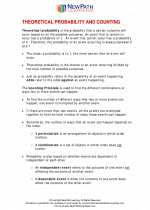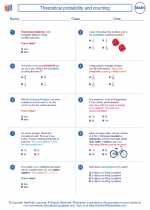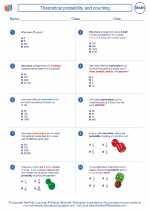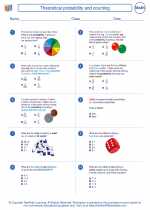Comparing Numbers
Introduction
Comparing numbers is an essential skill in mathematics. It involves determining the relative magnitude of two or more numbers. In this study guide, we will explore the different symbols and techniques used to compare numbers.Comparing Integers
When comparing integers (positive and negative whole numbers), we use the following symbols:- Greater than: >
- Less than: <
- Equal to: =
Examples
Let's consider the following examples:Example 1: Compare 5 and 8
5 < 8 (5 is less than 8)
Example 2: Compare -3 and -1
-3 > -1 (-3 is greater than -1)
Example 3: Compare 4 and 4
4 = 4 (4 is equal to 4)
Comparing Decimals
When comparing decimals, we follow the same rules as for integers. The placement of the decimal point does not affect the comparison.Examples
Example 1: Compare 3.25 and 3.5
3.25 < 3.5 (3.25 is less than 3.5)
Example 2: Compare 0.6 and 0.60
0.6 = 0.60 (0.6 is equal to 0.60)
Comparing Fractions
When comparing fractions, we can use a common denominator to make comparisons easier.Examples
Example 1: Compare 1/3 and 2/5
To compare these fractions, we can convert them to have a common denominator. Multiplying 1/3 by 5/5 gives 5/15, and multiplying 2/5 by 3/3 gives 6/15. Therefore, 1/3 < 2/5 (1/3 is less than 2/5).
Example 2: Compare 3/4 and 5/8
Again, we can convert these fractions to have a common denominator. Multiplying 3/4 by 2/2 gives 6/8, and 5/8 is already in terms of 8. Therefore, 3/4 > 5/8 (3/4 is greater than 5/8).
Study Tips
- Practice comparing different types of numbers, including integers, decimals, and fractions.
- Use visual aids, such as number lines, to help with comparisons.
- Understand the concept of equivalent fractions to make comparing fractions easier.
- Pay attention to the placement of the decimal point when comparing decimals.
[Comparing Numbers] Related Worksheets and Study Guides:
.◂Math Worksheets and Study Guides Eighth Grade. Theoretical probability and counting
Study Guide Theoretical probability and counting
Theoretical probability and counting  Worksheet/Answer key
Worksheet/Answer key Theoretical probability and counting
Theoretical probability and counting  Worksheet/Answer key
Worksheet/Answer key Theoretical probability and counting
Theoretical probability and counting  Worksheet/Answer key
Worksheet/Answer key Theoretical probability and counting
Theoretical probability and counting 

 Worksheet/Answer key
Worksheet/Answer key
 Worksheet/Answer key
Worksheet/Answer key
 Worksheet/Answer key
Worksheet/Answer key

The resources above cover the following skills:
DATA ANALYSIS, STATISTICS, AND PROBABILITY
Understand that, just as with simple events, the probability of a compound event is the fraction of outcomes in the sample space for which the compound event occurs. Understand and use appropriate terminology to describe independent, dependent, complementary, and mutually exclusive events.
For events with a large number of outcomes, understand the use of the multiplication counting principle. Develop the multiplication counting principle and apply it to situations with a large number of outcomes.